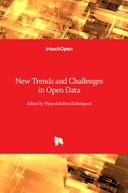Explore

New Trends and Challenges in Open Data
0 Ungluers have
Faved this Work
Login to Fave
Data is often open to all users and sharers. Governments provide data on publicly available websites and this data may pertain to specific regions or be aggregate data on national or international issues. Data that is in the public domain but not in a machine-readable format is considered public data and may only be accessible via a right-of-access request. Maintaining accuracy and management is a major obstacle when it comes to data systems and solutions. Data governance describes the rules, procedures, and responsibilities that outline the data's acquisition, storage, retrieval and use. Data security and privacy refer to safeguards put in place to protect information from being seen, copied, distributed, altered, or destroyed without permission. Data integration and interoperability involve combining and exchanging data from many sources, systems, and formats, as well as facilitating data sharing and collaboration across various platforms, apps, and organizations. Defining data standards, implementing data quality checks, assigning data ownership and responsibility, and monitoring data performance and utilization are all important steps toward resolving the data quality problem. This book contains two sections. “Trends and Challenges of Open Data” and “Case Studies”. Each section contains three chapters.
This book is included in DOAB.
Why read this book? Have your say.
You must be logged in to comment.
